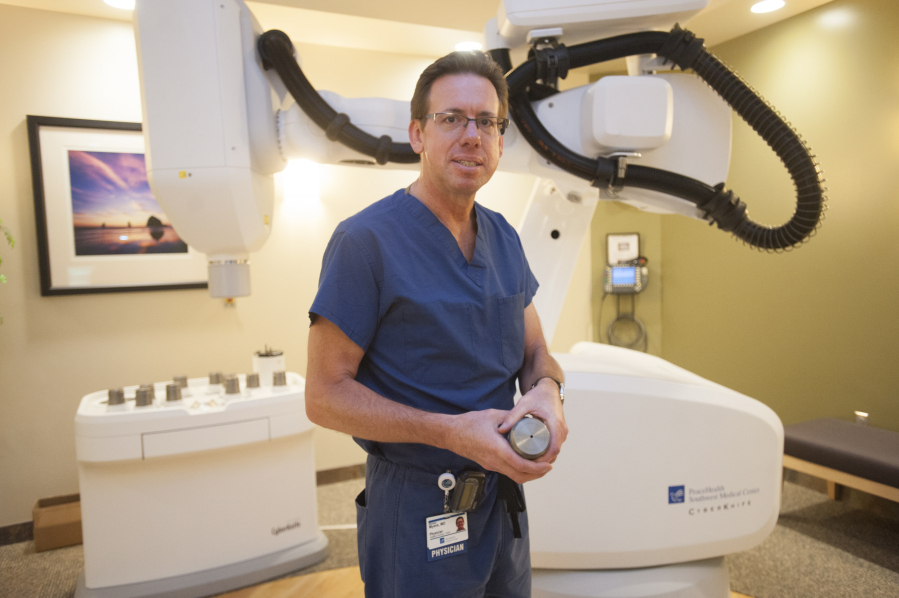It’s quick. It’s painless. It’s covered by insurance. And it’s among the best-kept secrets in treating prostate cancer.
Meet the CyberKnife Robotic Radiosurgery System, a $3 million machine that delivers stereotactic body radiation therapy. Developed at Stanford University, the machine moves around the patient to deliver about 200 high-dose beams of radiation from all angles to target tumors in areas like the prostate.
Radiation oncologist Dr. Michael Myers began offering the innovative, noninvasive treatment for prostate cancer three years ago at PeaceHealth Southwest Medical Center. All 16 patients he’s treated so far have gone into remission with no recurrences.
“There isn’t a single one of my patients yet who’s failed,” said Myers, who participates in a multi-institutional national registry that tracks the procedure’s efficacy and side effects.




